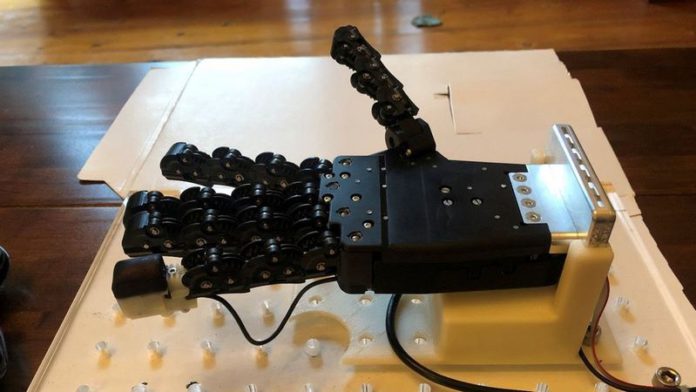Robots have been given fingertips that can “feel” like human skin.
Machines can beat the world’s best chess player but until now could not handle a chess piece as well as an infant.
This lack of robot dexterity is partly because artificial grippers lack the fine tactile sense of the human fingertip to guide our hands when we handle objects.
Scientists at the Bristol Robotics Laboratory have now developed a highly sensitive 3D-printed fingertip mesh of pin-size sensors similar to the papillae in human skin.
Prof Nathan Lepora, of Bristol University, said: “Our work helps uncover how the complex internal structure of human skin creates our human sense of touch.
“This is an exciting development in the field of soft robotics being able to 3D-print tactile skin could create robots that are more dexterous or significantly improve the performance of prosthetic hands by giving them an in-built sense of touch.”
Papillae are found between the outer epidermal and inner dermal layers of human tactile skin.
The robot papillae are made on advanced 3D-printers that can mix together soft and hard materials to create complicated structures like those found in biology.
Their findings, published in the Journal of the Royal Society Interface, include the first neural recordings of the human sense of touch.
Despite the breakthrough, the robot skin was still not as sensitive to fine detail.
Prof Lepora added: “We found our 3D-printed tactile fingertip can produce artificial nerve signals that look like recordings from real, tactile neurons.
“Human tactile nerves transmit signals from various nerve endings called mechanoreceptors, which can signal the pressure and shape of a contact.”

